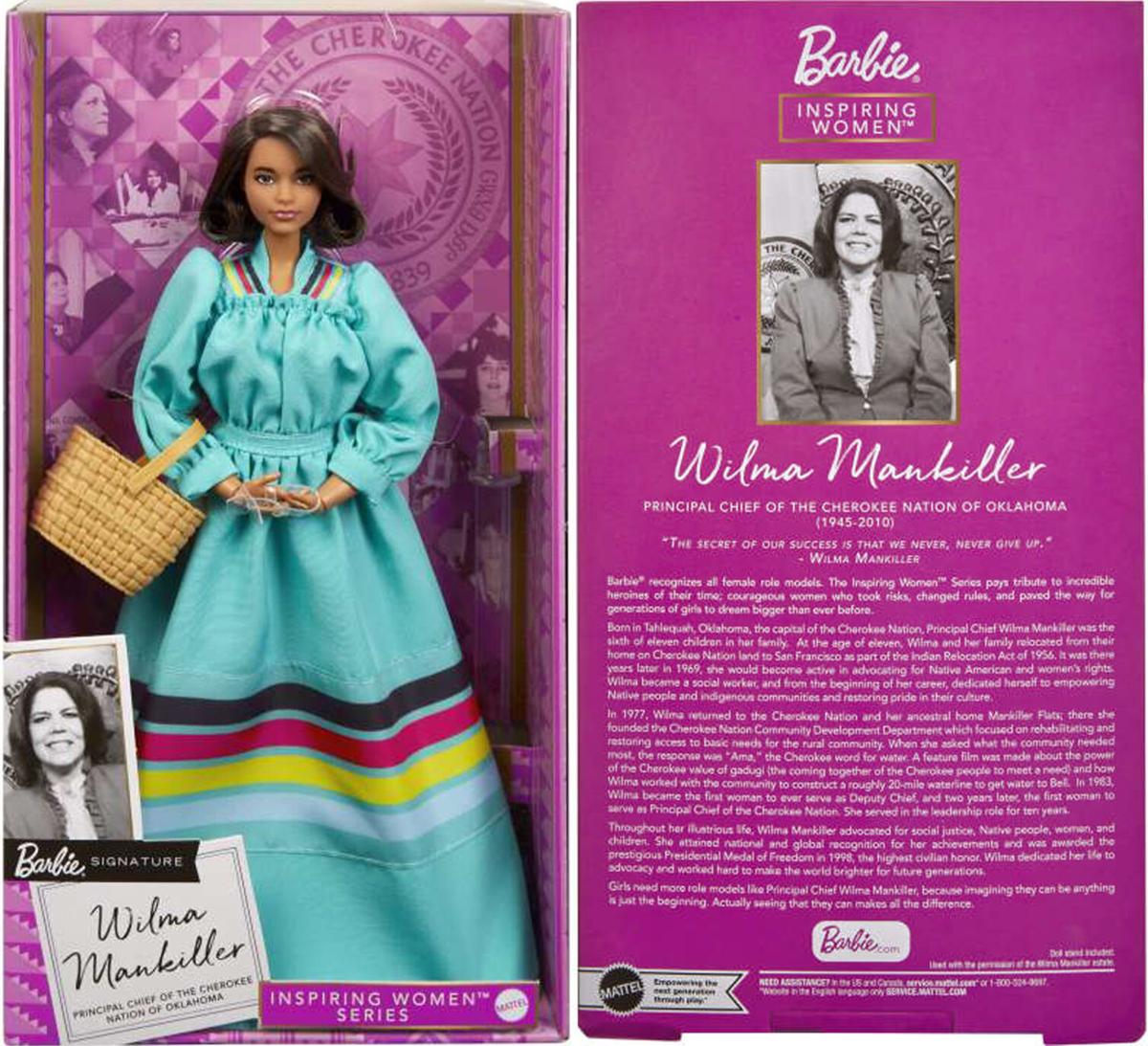Mattel Missteps With Cherokee Barbie
By Melissa Vela-Williamson, M.A., APR, Fellow PRSA
February 2024
Mattel, who seemingly made all the right marketing moves with the blockbuster Barbie film last summer, overlooked key details on a recent product launch.
The company made a new Cherokee Barbie but did not involve Cherokee tribes in the development of the doll. According to The New York Times, Mattel created the Barbie to represent Wilma Mankiller, the first woman to be elected chief of the Cherokee Nation.
While tribal citizens were excited about the effort, the inaccuracies of the portrayal marred the toy’s release in December, drawing criticism from several members of the Cherokee Nation. For starters, the doll’s packaging included the wrong set of Cherokee language symbols, which resulted in the package syllabary reading “Chicken Nation” instead of “Cherokee Nation.”
Angela Łot’oydaatlno Gonzalez, a writer, bead artist and communications manager at Chugachmiut, a nonprofit that serves the seven Native tribes in the Chugach Region of Alaska, knows how a representative Barbie can uplift others.

Here, she shares her thoughts on Mattel’s missteps and her Barbie creation.
Tell us about “Fish Camp Barbie.”
I grew up in Huslia, a small Alaskan village along the Koyukuk River. Our family fish camp, located 16 miles downriver, was the highlight of every summer. My fondest memories include playing with Barbie dolls alongside the river, where my creative mom and late Grandma Lydia made miniature fish camps using twigs, willows and diamond willow leaves.
Using what was around us as inspiration, Grandma Lydia crafted mini tłaabaas [knives] from salt container pourers, and we eagerly awaited finishing a salt package to gift our Barbie’s new tłaabaas. We were instilled with the value of resourcefulness and cultural continuity.
In adulthood, I carried on this tradition by creating Fish Camp Barbies for my daughter and later for fundraisers supporting Native nonprofits. Despite some of Barbie’s problematic aspects as far as cultural representation, I saw an opportunity to share Athabascan and Alaska Native culture with a broader audience, providing a representation of our way of life.
What can we glean from your creation of Fish Camp Barbie?
As we say to our leadership and clients, a goal of going “viral” doesn’t always mean what they think it means or have the desired outcomes. However, some things can help get your message out.
Being available and responsive to media inquiries was also key. I made sure to give accurate information and descriptions of each item, and I also gave my daughter credit for her contributions. I shared the photos and videos and gave the media permission to share. It was picked by local, statewide and a couple of national Native media outlets.
What PR lessons do you take away from the Cherokee Barbie mistakes?
Consultation is key. Go beyond “checking the box.” Pay for an authentic language speaker when using American Indian/Alaska Native languages. If you wish to honor a person, culture, tribe or language, take those extra steps to double-check what you are putting out there.
Be transparent when you make a mistake, apologize and outline how you will fix it. Overall, I am very encouraged to see Mattel making more Indigenous Barbies. It is important for children to see themselves represented in toys.
How can PR pros best work to honor Native groups or cultures?
Reach out to Alaska Native/Native American people to uplift their stories. Create a space for stories and Indigenous representation. Learn about the harmful effects of cultural appropriation. Learn about land acknowledgment and take steps that go beyond that.
Ask more than one Native group/culture when you are doing something. We are not a monolith. I am a Koyukon Athabascan Den’a, and I cannot speak for other tribes, cultures and languages. While we have some similarities, we have different cultures, ways of life and languages. It could be like asking a Chinese person to speak on Japanese culture.



